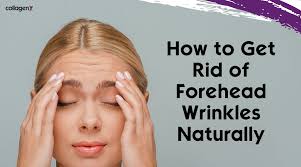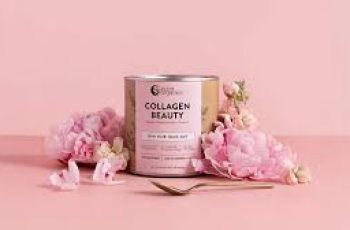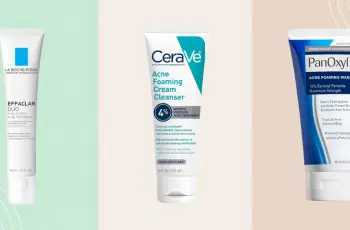
How to Reduce Wrinkles on Forehead: A Complete Skincare and Lifestyle Guide
Forehead wrinkles may be a natural part of aging, but that doesn’t mean you have to sit back and accept them without a fight—there are many ways to soften and smooth these fine lines.
Whether you’re exploring natural remedies, smart skincare strategies, or professional treatments like Botox, there’s a solution to help you reclaim a smoother, more youthful-looking forehead.
From antioxidant-rich foods to hydrating serums and preventative practices, understanding the causes and available solutions empowers you to take control of your skin’s health.
Let’s explore what causes forehead wrinkles, how to reduce them naturally, and what advanced treatments can truly deliver visible results for long-term skin rejuvenation.
What Causes Forehead Wrinkles in the First Place?
Forehead wrinkles develop primarily due to the repetitive contraction of the frontalis muscle, which activates whenever you lift your eyebrows or express emotions.
Over time, these repeated movements stretch the skin and form horizontal lines across the forehead, which can deepen as collagen production decreases with age.
Even if you don’t notice yourself raising your brows, this subtle muscle activity happens regularly throughout the day as you speak, react, and interact with others.
For some people, these lines become more prominent due to genetics, facial expressiveness, and skin elasticity, while others may develop them more gradually.
As collagen and elastin decline in the deeper layers of skin, the surface begins to lose its bounce and firmness, making wrinkles more pronounced and persistent.
Environmental stressors, including UV rays, pollution, and toxins, can break down the skin’s barrier and accelerate wrinkle formation by triggering oxidative damage.
Additionally, free radicals generated from daily exposure to sunlight and pollutants can break down essential proteins, leading to rougher texture and visible forehead lines.
Simple Lifestyle Changes to Reduce Forehead Wrinkles Naturally
While facial expressions are hard to control, you can make daily lifestyle adjustments to slow wrinkle formation and minimize their appearance over time.
These simple yet effective strategies can support skin regeneration and improve overall facial appearance—especially when combined with a targeted skincare routine.
1. Load Up on Antioxidant-Rich Foods
A nutrient-dense diet packed with antioxidants, such as vitamins A, C, and E, helps protect skin from environmental damage and supports natural collagen production.
Foods like berries, spinach, kale, sweet potatoes, citrus fruits, avocados, and almonds contain skin-loving compounds that neutralize free radicals and promote healing.
These vitamins also help maintain your skin’s natural barrier function, preventing moisture loss and shielding your face from harmful elements like UV rays and pollution.
Aim to incorporate leafy greens, colorful vegetables, and vitamin-rich fruits into your meals daily to encourage smoother skin and a radiant complexion from within.
2. Use Sunscreen Every Single Day—No Exceptions
Sun exposure is one of the most damaging factors contributing to wrinkles, pigmentation, and overall skin aging, especially on high-exposure areas like the forehead.
Wearing SPF 30 or higher every day—even when it’s cloudy—protects your skin from harmful UVA and UVB rays that weaken collagen and deepen forehead lines.
Choose a broad-spectrum, non-comedogenic sunscreen that suits your skin type and apply it generously in the morning, reapplying every two hours if you’re outdoors.
3. Quit Smoking to Prevent Accelerated Skin Aging
Smoking restricts blood flow to the skin and lowers oxygen and nutrient delivery, leading to a dull complexion and faster wrinkle formation, especially on the forehead and around the mouth.
Nicotine damages collagen and elastin fibers, reducing skin firmness and resilience while increasing sagging and wrinkle depth over time.
Quitting smoking not only benefits your overall health but also allows your skin to begin healing, improving tone, texture, and long-term appearance.
4. Stay Hydrated and Ditch the Dehydration Habits
Drinking enough water daily supports cellular function and helps maintain skin elasticity, preventing premature wrinkles and dryness.
Since the skin is the body’s largest organ and often the last to receive hydration, it’s crucial to drink consistently throughout the day to keep your skin supple.
Avoid overconsuming caffeine or alcohol, which can dehydrate your body and dull your complexion—opt instead for herbal teas and water-rich foods.
Topical hydration is also key: using products with humectants like hyaluronic acid helps draw moisture into the skin and lock it in for lasting softness.
Natural and Skincare-Based Solutions for Forehead Wrinkles
If you prefer to reduce wrinkles without invasive procedures, high-performance skincare packed with active ingredients can deliver excellent results over time.
Consistency is key—following a targeted skincare regimen daily can improve skin texture, boost collagen production, and minimize visible forehead lines naturally.
Antioxidant-Powered Serums and Moisturizers
Look for serums containing vitamin C, vitamin E, niacinamide, and resveratrol to combat oxidative stress, brighten dull skin, and enhance elasticity.
These ingredients help repair damaged skin cells, neutralize free radicals, and stimulate collagen synthesis to smooth fine lines across the forehead.
Serums are typically more potent than moisturizers, penetrating deeper into the skin and delivering concentrated benefits for faster, more noticeable results.
Exfoliation to Reveal Fresher, Younger-Looking Skin
Gentle exfoliation—whether physical or chemical—helps slough away dull, dead skin cells that can emphasize the appearance of lines and rough texture.
Chemical exfoliants containing AHAs (like glycolic or lactic acid) and BHAs (like salicylic acid) are especially effective for renewing the skin’s surface.
Regular exfoliation promotes faster cell turnover, allowing newer, smoother skin to emerge while improving product absorption and glow.
Hydration Heroes: Hyaluronic Acid and Niacinamide
Hyaluronic acid holds up to 1,000 times its weight in water, making it an ultra-effective hydrating ingredient for plumping and softening forehead lines.
Niacinamide, a form of vitamin B3, improves skin elasticity, boosts barrier function, and reduces inflammation, contributing to a smoother and firmer forehead.
Layer these ingredients into your routine using serums or lightweight moisturizers to lock in hydration and visibly improve skin texture.
Professional Skin Peels for Smoother Foreheads
A chemical peel uses concentrated acids—like glycolic, salicylic, or lactic acid—to exfoliate the top layers of the skin, revealing a smoother and more refined surface.
Professional peels performed by dermatologists or estheticians can significantly improve fine lines, texture, and pigmentation in just a few sessions.
While at-home peels exist, in-office treatments contain higher concentrations for faster results, but they require downtime and proper aftercare.
What About Botox for Forehead Wrinkles?
If natural methods aren’t giving you the results you want, injectable treatments like Botox offer a highly effective solution for deep forehead lines.
Botox works by temporarily relaxing the frontalis muscle, preventing it from contracting and forming expression lines on the skin’s surface.
As the muscle relaxes, the skin above it remains smooth, reducing the appearance of existing wrinkles and preventing new ones from forming.
Botox results typically last around 4 to 6 months, and regular maintenance injections are needed to preserve the smooth, youthful effect.
It’s minimally invasive, widely available, and safe when administered by a qualified professional, making it a top choice for wrinkle prevention and treatment.
When Should You Start Preventing Forehead Wrinkles?
The earlier you begin a preventative skincare routine, the better—many experts recommend starting as early as your late teens or early twenties.
A consistent routine including SPF, antioxidants, hydration, and gentle exfoliation lays the foundation for long-term skin health and delayed aging signs.
Even if you’re in your 30s or beyond, it’s never too late to incorporate wrinkle-fighting ingredients like retinol, peptides, and vitamin C into your regimen.
If lines are visible even when your face is relaxed, more advanced options like chemical peels or Botox may be necessary for noticeable improvement.
Best Ingredients to Add to Your Anti-Wrinkle Skincare Arsenal
Retinol: Speeds up cell turnover and stimulates collagen, great for deep-set lines.
Peptides: Help rebuild the skin’s structural proteins and firm up sagging skin.
Vitamin C: Brightens, protects, and boosts collagen for smoother, radiant skin.
Hyaluronic Acid: Keeps skin plump, hydrated, and bouncy-looking.
Sunscreen (SPF 30+): Daily defense against wrinkle-causing UV damage.
Final Thoughts: Combine Prevention, Skincare, and Treatments
Reducing forehead wrinkles is achievable with the right combination of preventative care, high-quality skincare products, and professional treatments if needed.
Focus on protecting your skin daily with sunscreen, nourishing it with antioxidants, hydrating it thoroughly, and staying consistent with your routine.
If wrinkles are already noticeable or becoming deeper, treatments like chemical peels or Botox can provide that extra edge for visible transformation.
Ultimately, the most powerful results come from a holistic approach—protect, correct, and prevent for smoother, healthier, and more youthful skin.


